Step Into the Ring With Confidence: Beginner Boxing Skills Guide
Why Boxing Skills for Beginners Are Your Gateway to Total Fitness
Boxing skills for beginners are the foundation of a complete workout, combining cardio, strength, and mental discipline. It relieves stress, builds confidence, and breaks up boring gym routines, with benefits that extend far beyond the ring.
Here are the essential boxing skills every beginner should master:
- Proper Boxing Stance - Orthodox or southpaw positioning with feet shoulder-width apart
- Basic Footwork - Step-drag movement, pivoting, and lateral movement
- The Four Fundamental Punches - Jab (1), Cross (2), Hook (3), and Uppercut (4)
- Essential Defense - Guard position, blocking, and basic head movement
- Breathing Technique - Exhaling with punches and maintaining rhythm
Boxing is adaptable for all fitness levels. Research shows conditioning should be 50% of your workouts when starting out. You'll build fitness while learning.
Many trainers say boxing is 90% mental. It develops focus, discipline, and confidence that carries over into daily life. You'll learn to stay calm under pressure while getting an incredible full-body workout.
I'm Robby Welch, National Head Coach at Legends Boxing. With over two years of experience, I've helped thousands of beginners master fundamental boxing skills for beginners by developing accessible and enjoyable training programs used nationwide.
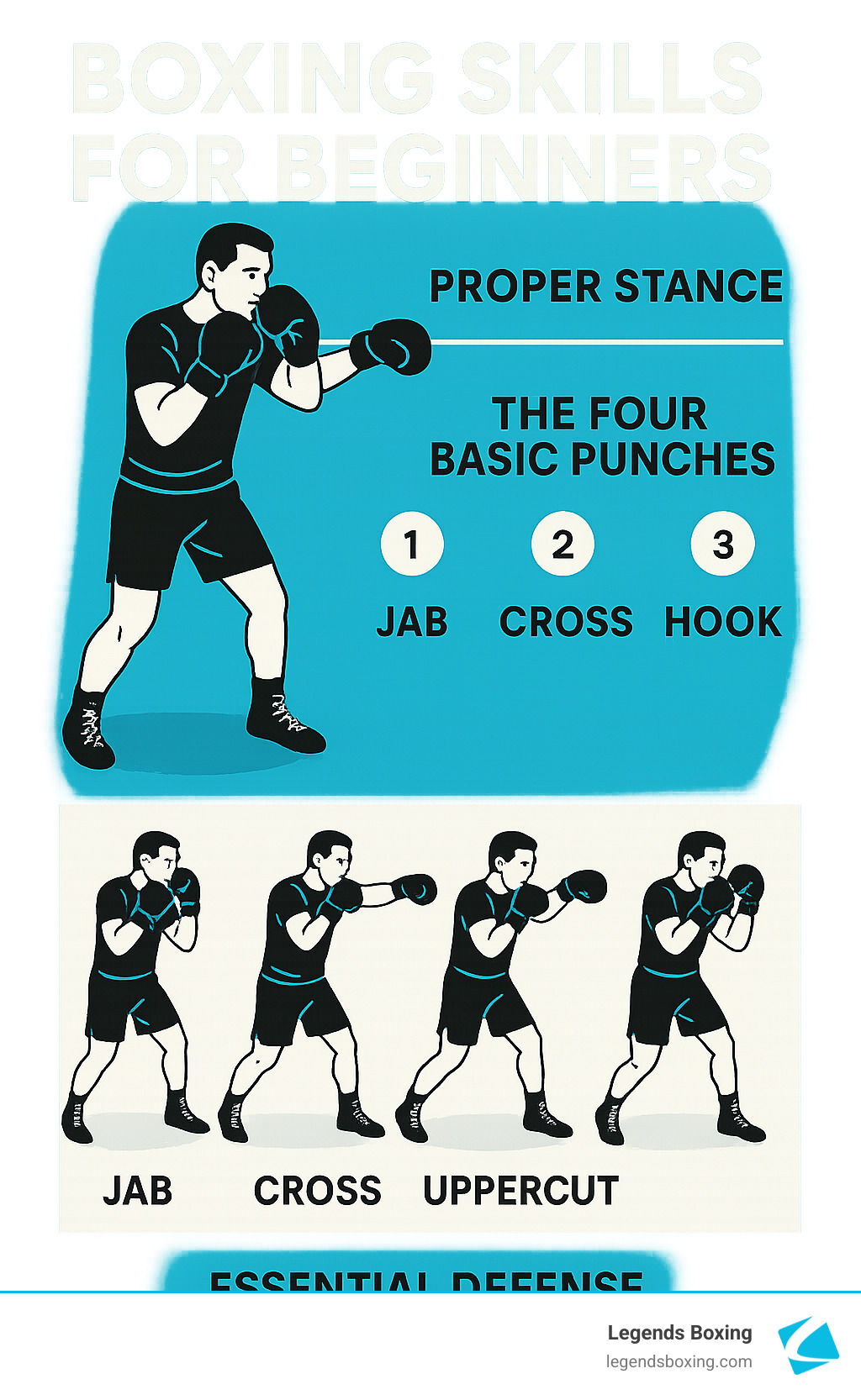
Terms related to boxing skills for beginners:
Why Step Into the Ring? The Unbeatable Benefits of Boxing
Boxing offers a holistic change, building a stronger, more resilient you—physically and mentally.
Physical Benefits: Boxing is a full-body workout that hits every muscle group. You'll experience incredible improvements in:
- Cardiovascular Health: Constant movement boosts cardiovascular health, endurance, and stamina. Roadwork (running 2-3 times a week) is key.
- Strength Building: Every punch and defensive move engages your core, shoulders, arms, and legs, building functional strength.
- Weight Loss: This high-intensity workout can burn 500-700 calories in just 30 minutes, making it highly effective for weight loss and improving body composition. According to the Harvard Health Publishing calorie-burn chart, a 155-pound person can burn roughly 500 calories during half an hour of boxing training.
- Coordination and Agility: The combination of footwork, head movement, and punches sharpens hand-eye coordination and agility.
Mental Benefits: Beyond the physical, boxing is a powerful mental discipline.
- Stress Relief: Hitting a heavy bag is a fantastic way to release stress and frustration, leaving you refreshed.
- Increased Confidence: Mastering new skills and seeing physical improvements will make your self-confidence soar in and out of the gym.
- Discipline and Focus: Boxing demands discipline and focus. You'll learn to concentrate on technique and strategy, fostering mental fortitude. Many trainers say boxing is 90% mental; the ability to stay calm under pressure and think strategically is key.
Self-Defense Skills: While our focus is fitness, the fundamental boxing skills for beginners you learn are rooted in self-defense. You'll gain practical knowledge on how to protect yourself and move effectively.
Building Your Foundation: The Core Boxing Skills for Beginners
Learning boxing is like building a house; a solid foundation is essential. Before you can "float like a butterfly, sting like a bee," you must master the basics.
Your stance and footwork are the bedrock of boxing. They control your balance, mobility, power, and defense. Without them, your punches will be weak and your defense will be full of holes.
While every boxer develops a unique style, we'll provide the best practices to start your boxing skills for beginners journey on the right foot.
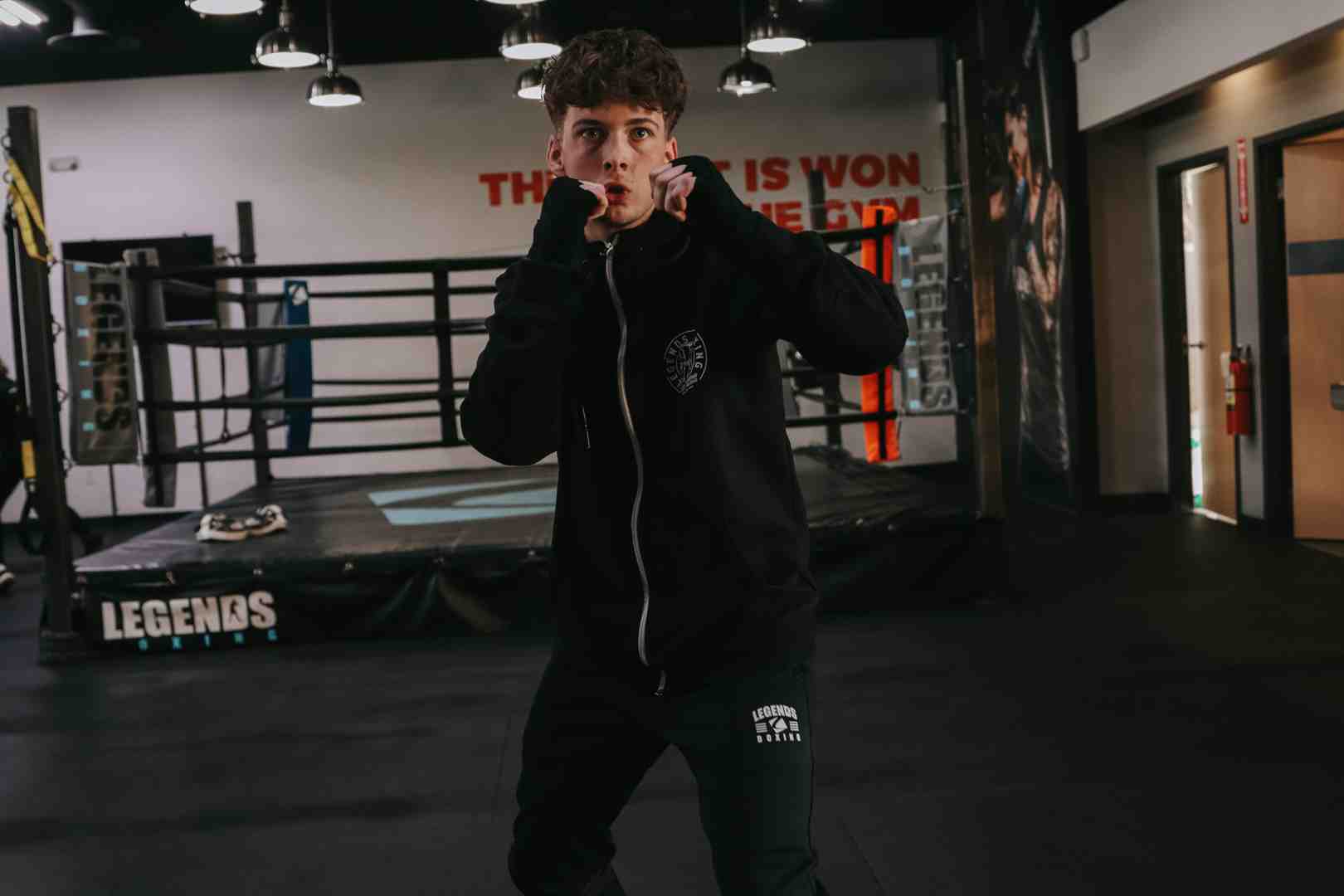
The Boxer's Stance: Your Platform for Power and Defense
Your stance is your home base in boxing, providing balance and a platform for offense and defense.
First, determine if you're orthodox (left foot forward) or southpaw (right foot forward). Most right-handed people are orthodox. It may feel awkward at first, but that's normal.
To build your stance, place your feet shoulder-width apart. Your dominant hand goes in the back for power. Angle your feet about 45 degrees toward your target, with your lead toe aligned with your rear heel.
Keep your knees slightly bent to move quickly and generate power. Your weight should be evenly distributed on the balls of your feet, keeping you light and mobile.
Tuck your chin to protect your jaw. Bring your hands up into a guard position: lead hand at shoulder height, rear hand by your chin, and elbows tucked in to protect your ribs.
Float Like a Butterfly: Essential Footwork Drills
Footwork is the most important skill in boxing, controlling distance, angles, power, and safety.
The foundation is the step-drag. To move, step with the foot in the direction you're going, then drag the other to follow, always maintaining your stance.
Pivoting on the ball of your lead foot creates angles and helps you escape trouble. Practice pivots of 45-90 degrees.
Lateral movement makes you a harder target. Practice moving side-to-side while maintaining your stance to control the ring and stay away from the ropes.
Basic Footwork Drills include shadow stepping, ladder drills for precision, cone drills for changing direction, and jumping rope to build rhythm and stamina.
Well-honed footwork can help you defend without using your guard, making you incredibly hard to hit.
Mastering the Offense: The 4 Basic Punches
With stance and footwork down, it's time for punches. True power isn't brute force; it comes from your entire body working together.
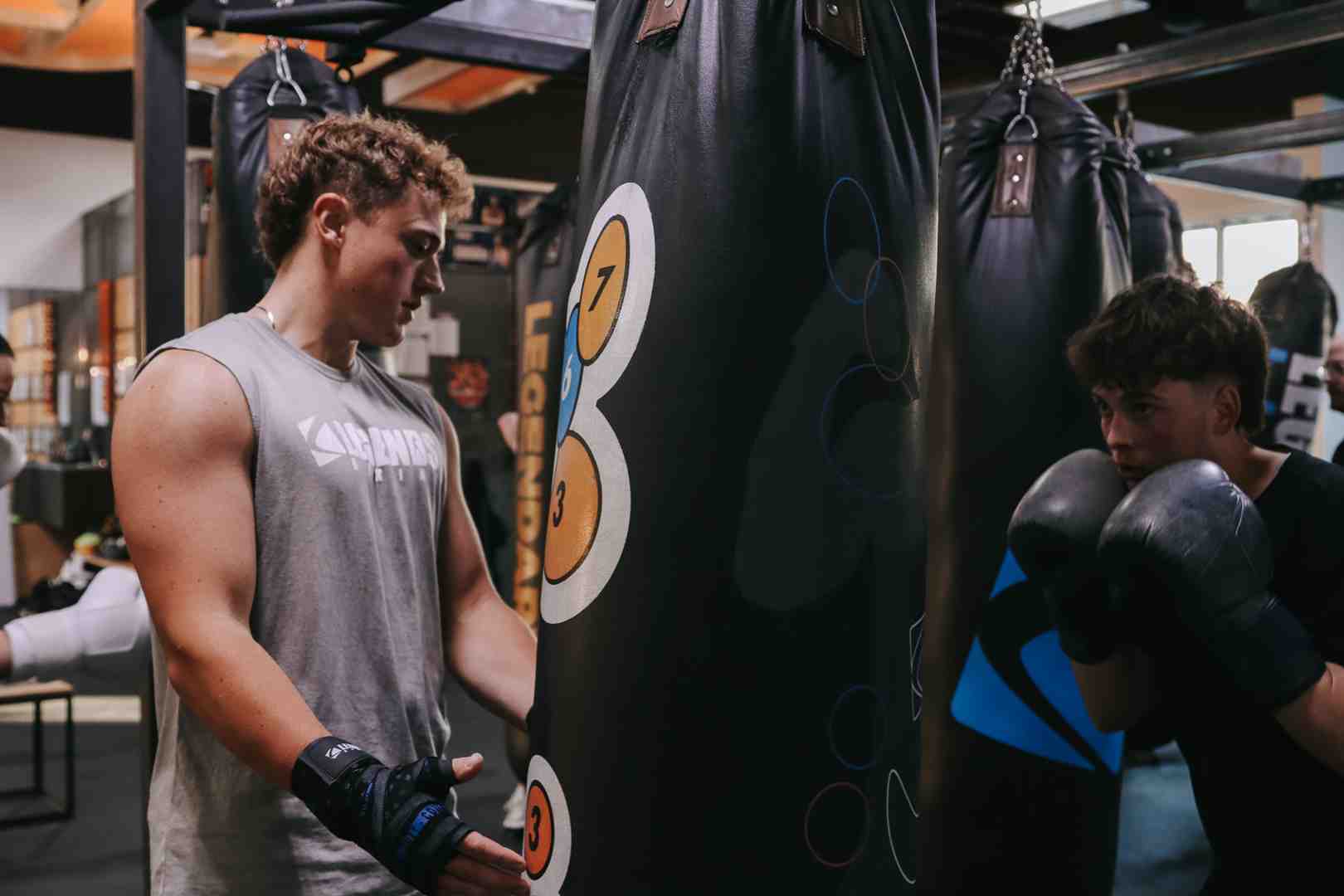
Power comes from rotation in your hips and core, not just your arms. Beginners often get this wrong, punching only with their shoulders.
Exhale sharply with each punch. This generates power and prevents you from gassing out. That "tss" sound you hear from boxers is intentional.
A crucial skill is to always return your hands to your guard immediately. Speed is 50% throwing the punch and 50% snapping it back to defend.
The Jab (1): Your Busiest Punch
The jab (your lead hand punch) is your most versatile tool. Use it to set up combinations, measure distance, and disrupt an opponent's rhythm.
Technique: Extend your lead arm straight out, rotating your fist so the palm faces down on contact. Your shoulder will rise to protect your chin. Snap it back to your guard immediately. This arm rotation gives the jab its snap and power.
The Cross (2): Your Power Punch
The cross is your power punch, thrown with your rear hand. It relies heavily on hip rotation.
Technique: Push off your rear foot, rotating your hips and shoulders as you extend your rear arm. Pivot your rear heel to transfer body weight into the punch. Rotate your fist palm-down on impact and snap it back to your guard.
Ready to try these punches in a supportive environment? More info about what to expect in our classes
The Hook (3): The Side-Angle Shot
The hook is a powerful, curved punch thrown with either hand in a horizontal motion.
Technique: Power comes from your core and hips. Keep your elbow bent at 90 degrees. Pivot on your lead foot as you throw to generate rotational power. Always keep your non-punching hand guarding your chin.
The Uppercut (4): The Up-Close Devastator
The uppercut is a devastating, close-range punch. It's used less often, making it very effective.
Technique: Drop your shoulder slightly and drive your fist upward in a compact motion. Power comes from pivoting at your waist and transferring weight upward. Avoid leaning forward or dropping your hands; it should be a short, controlled punch to the chin or body.
"Hit and Don't Get Hit": Essential Defensive Skills
Defense is as crucial as offense. The art of boxing is to "hit and not get hit." Good defense prevents injury and creates counter-punching opportunities. Always keep your eyes on your opponent.
Defense can be active (moving your body to avoid punches) or passive (using your guard to block). Both are essential for beginners.
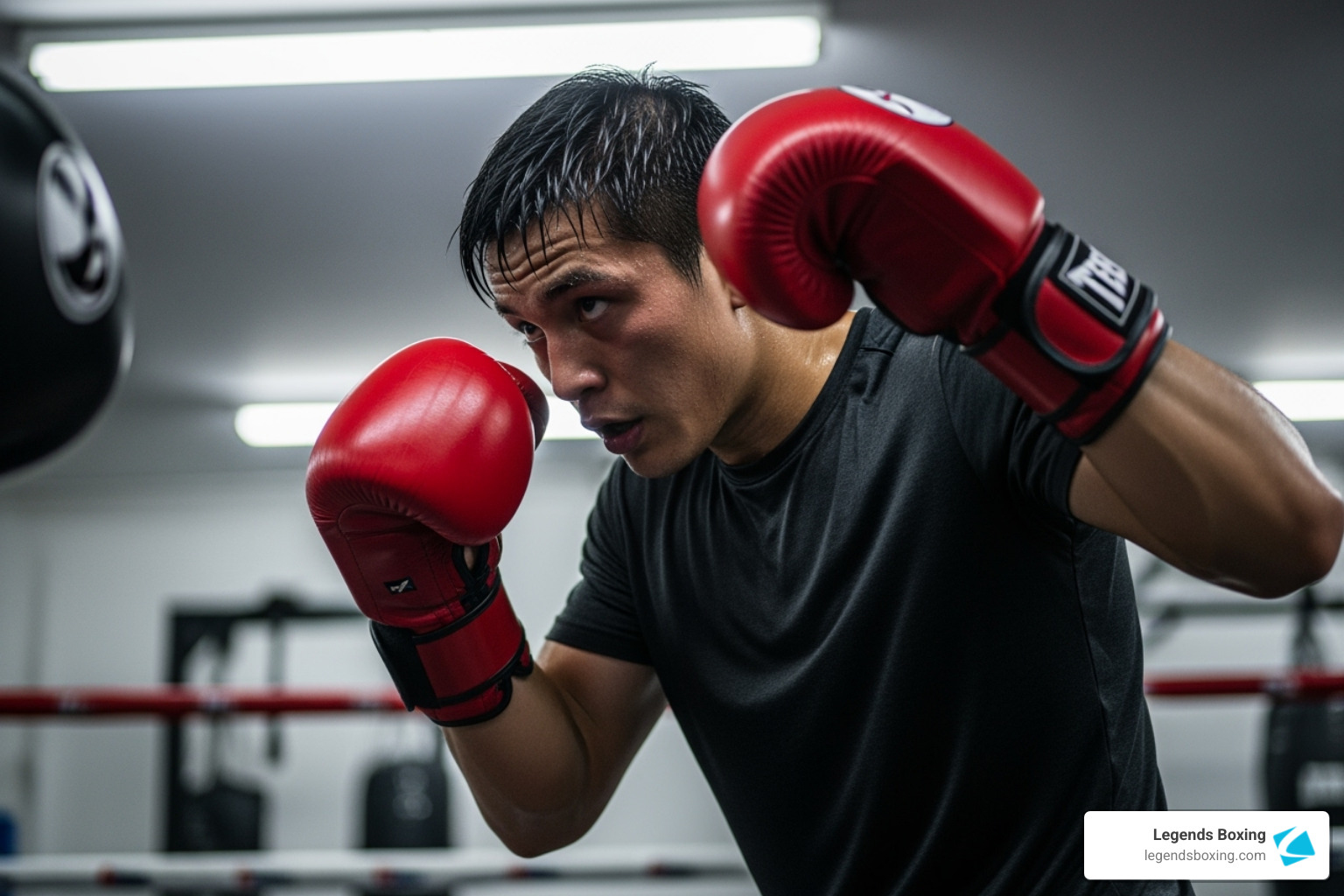
Your Guard: The First Line of Defense
Your guard is your primary shield. It's your armor, protecting vulnerable areas.
Blocking means using your forearms and gloves as shields. Keep your hands up and elbows tucked in. Your non-punching hand should always be guarding.
Parrying is deflecting a punch with a slight hand movement. This redirects the punch and creates openings for a counterattack.
The key is keeping your elbows tucked to create a tight defensive shell. Your gloves should frame your face so you can see incoming punches.
Head Movement: Making Them Miss
Once your guard is solid, add head movement to make opponents miss. This is the art of making them swing at air while you stay in position to counter.
Slipping is a small head movement to the side to make a punch miss. It keeps you in perfect position to counter immediately.
Bobbing and weaving are larger movements. Bobbing is ducking under punches by bending at the knees, while weaving is a U-shaped motion to avoid combinations. Both require good leg strength.
The secret to effective head movement is using your legs, not just your neck. Push off the opposite foot for power and balance when you slip.
This makes you a smaller, moving target, which frustrates opponents and helps you create counter-punching angles.
The best defense combines a solid guard with smart head movement for multiple layers of protection.
Gearing Up and Getting Started
Now that you know the theory, it's time to practice. Transitioning to a gym can feel overwhelming, but the right preparation and mindset will have you punching like a pro.
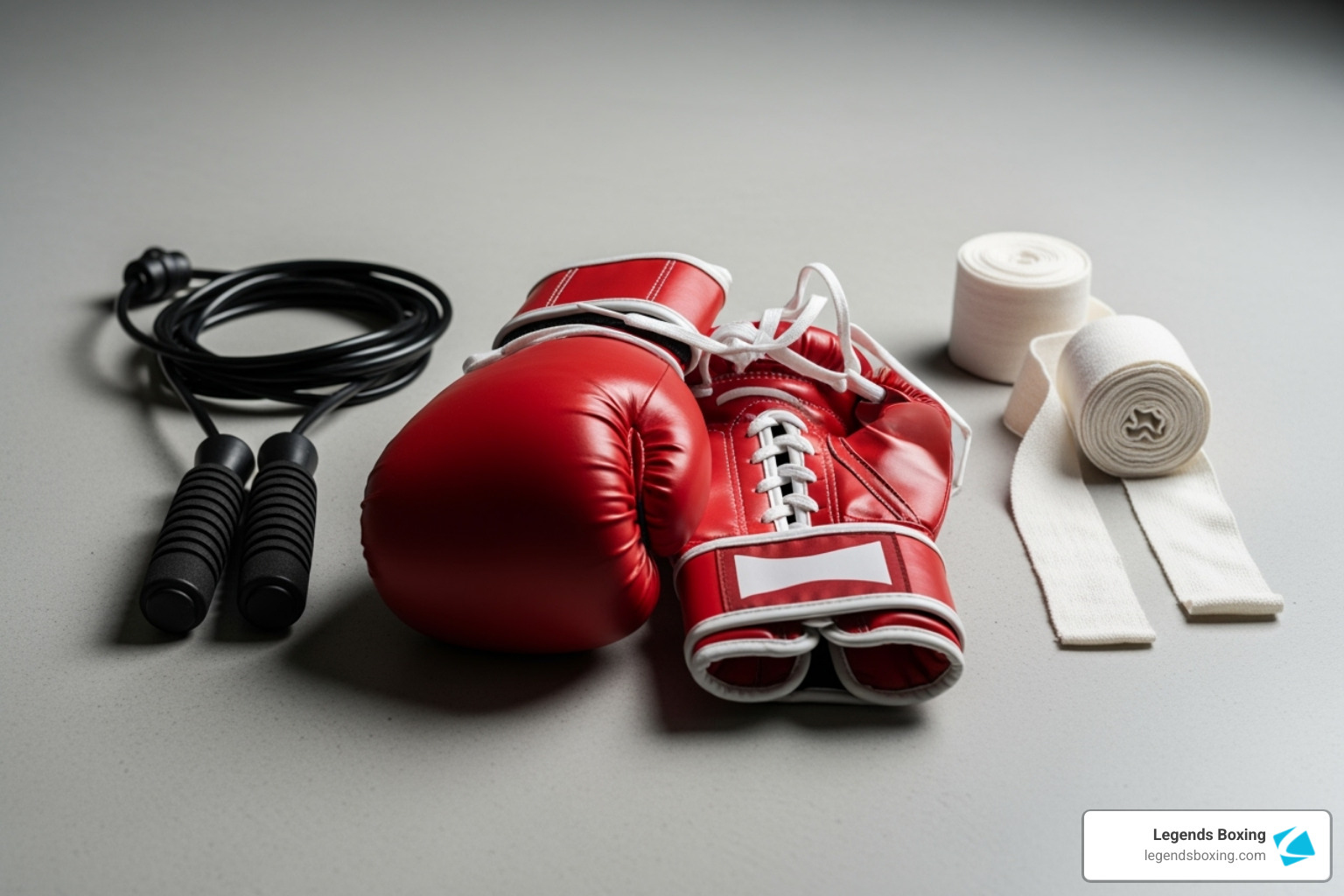
Choosing the right gym and coach is crucial. Look for one that is accessible with a convenient location and schedule.
Read reviews and talk to members. A good gym has qualified coaches focused on technique, safety, and your progress. An experienced Legends Boxing coach will guide you in building solid fundamentals.
The atmosphere matters. Look for a supportive community, clean facilities, and proper equipment.
Schedule a trial class to experience the vibe and meet the coaches. Find a Legends Boxing gym near you to start your journey.
Essential Boxing Equipment for Beginners
You don't need to break the bank to start. A few key pieces of gear are essential for safety and training.
- Boxing gloves: Your most important investment. Use 14oz or 16oz gloves for training to provide enough cushioning. Heavier gloves help build strength and protect your hands.
- Hand wraps: These are non-negotiable. They protect the small bones in your hands and support your wrists to prevent injury. Always wrap your hands before putting on gloves.
- Comfortable workout clothes: Wear breathable athletic clothes that allow for a full range of motion.
- Jump rope: An old-school but effective tool for building conditioning, footwork, and rhythm. It's also portable and affordable.
Recommended Gear for Sparring
If you plan to spar, you'll need additional protective gear for safety.
- Mouthguard: Non-negotiable for sparring. It protects your teeth and jaw from serious damage.
- Headgear: Protects your head and face from cuts and impact. Always wear it during sparring.
- Groin protector: Optional but highly recommended for male boxers for crucial protection.
Putting It All Together: Your First Training Sessions
This is where you put your boxing skills for beginners into practice. In your first sessions, everything starts to click.
Consistency is key. Train 2-3 times a week to build skills and conditioning while allowing for recovery.
Expect conditioning to be 50% of your early workouts. This includes running, jumping rope, and bodyweight exercises. This balance will shift as your fitness improves.
Practice at home. Shadowboxing in front of a mirror is a great way to practice your stance, footwork, punches, and defense. It builds muscle memory and improves technique.
If you have a heavy bag, use it to develop power and endurance. When starting, limit sessions to 1-2 times a week for no more than three rounds to let your body adapt.
Common Beginner Mistakes and How to Fix Them
Every beginner makes mistakes. Here are the most common ones and how to fix them:
- Dropping your hands: Always return your hands to your guard immediately after punching. Keep your non-punching hand by your face.
- Telegraphing punches: Avoid winding up or dropping your hand before a punch. Snap punches directly from your guard.
- Being flat-footed: Stay on the balls of your feet. Practice footwork drills and jump rope to stay light and mobile.
- Holding your breath: Exhale sharply with every punch. Stay relaxed to conserve energy.
- Over-committing to power shots: This leaves you unbalanced and vulnerable. Focus on technique and balance, not raw power. Use full-body rotation and snap your punches back quickly.
When to Start Sparring
Sparring is applying your skills against a live opponent. For beginners, it's a learning experience, not a fight. We recommend waiting at least a year under a coach's supervision before serious sparring.
The goal is to practice technique and timing, not to cause harm. Your coach will tell you when you're ready and find you a suitable partner.
Start with light, technical sparring. Focus on specific movements, not full-power exchanges. Always wear full protective gear (mouthguard, headgear, 16oz gloves).
Communication is key. Talk to your coach and partner about your goals. Your brain is precious, which is why we advocate for light sparring most of the time.
Frequently Asked Questions about Boxing Skills for Beginners
How long does it take to learn basic boxing skills?
You can learn the fundamentals of stance, punches, and footwork within a few weeks of consistent practice. Making these skills feel natural takes longer. It's like learning to drive; understanding the basics is quick, but becoming comfortable takes time.
Most people feel comfortable with the fundamentals after 1-3 months of training 2-3 times per week. Your confidence will grow, and your movements will feel more natural.
Mastery is a lifelong journey. Even pros constantly refine their technique. Focus on form over speed, and remember every champion was once a beginner.
Can I learn boxing by myself at home?
Yes, you can start at home. Shadowboxing, stance practice, and basic punch mechanics are great ways to begin. Online tutorials can teach you the theory.
However, to refine technique, correct mistakes, and learn defense, you need feedback from a qualified coach and partner drills in a gym. Learning alone is like learning to dance by yourself; you miss the interactive elements. Partner drills and a coach's eye are essential for real progress.
Home practice is a great supplement to gym training and will speed up your progress.
Is boxing a good workout for weight loss?
Absolutely. Boxing is one of the most effective workouts for weight loss. It's a high-intensity, full-body workout combining cardio and strength training. You can burn up to 700 calories per hour while targeting muscles often missed in traditional workouts.
Boxing is dynamic and engaging, which makes it effective for weight loss. It keeps your mind occupied while your body works hard, making it more fun than a treadmill.
The mix of cardio and strength improves body composition by building lean muscle, which boosts your metabolism. Plus, it's more fun than most cardio.
Conclusion
Your journey into boxing skills for beginners is just beginning. We've covered the building blocks to help you move, punch, and defend with confidence.
It all starts with a solid stance for power and protection. Your footwork is your engine for movement. The four fundamental punches are your offensive tools, and defensive skills keep you safe.
Boxing is more than just punches; it's a mental game that builds discipline, confidence, and resilience that will benefit every part of your life.
Consistency is your secret weapon. Every champion started as a beginner. Every practice session moves you forward on this incredible journey.
The beauty of boxing skills for beginners is that they meet you where you are. Whether you want to get in shape, relieve stress, or try something new, boxing has something for you.
Ready to find what you're truly capable of? We'd love to show you the Legends Boxing difference. Book a free workout to start your journey today and experience the incredible physical and mental benefits that await you. Your future self will thank you for taking this first step!






